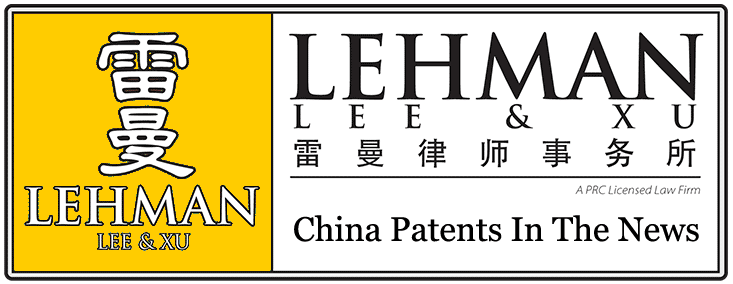In 2012, the last year for which statistics are available, 657,582 design patent applications were filed in China – more than in any other nation in the world. In fact, more design patent applications were filed in China than in the rest of the top 20 jurisdictions combined. But only a paltry 2.3% of the design patent applications in China were filed by non-Chinese entities. These statistics, and the fact that vast numbers of foreign companies manufacture and/or sell products in China, lead to two fairly obvious conclusions:
- Chinese companies are taking advantage of China’s legal IP protections for product design.
- Foreign companies are not.
Two comments about the above statistics (which are from WIPO). First, Chinese WFOEs and JVs are considered Chinese entities, but even if they were reclassified as non-Chinese entities, the numbers would not change appreciably. A quick search on China’s State Intellectual Property Office (SIPO) website revealed the following:
- Motorola: 635 of 653 design patents have been filed in the name of the American parent company.
- Ricoh: 135 of 172 design patents have been filed in the name of the Japanese parent company.
- Fuji Xerox: 23 of 24 design patents have been filed in the name of the Japanese parent company.
- Unilever: 352 of 360 design patents have been filed in the name of the Dutch parent company.
Second, a certain number of China design patent applications (especially at the end of the year) are filed to meet an artificial quota. Mark Allen Cohen’s China IPR blog has done a nice job of tracking this phenomenon. Without extensive analysis, it is difficult to know how much the numbers are skewed, but even if half of the filings were bogus, the point would remain the same: Chinese companies are filing vastly more design patents in China than foreign companies.
We have written a number of times about the need to register intellectual property in China with the appropriate authorities. And we have placed particular emphasis on registering trademarks in China, because doing so is an easy, obvious, and relatively economical first step in IP protection. But for those selling or manufacturing products in China, the analysis should not end there.
A design patent in China (generally analogous to a design patent in the U.S. or a Community design in the EU) covers novel product designs that (1) incorporate shapes, patterns, and/or colors, (2) are rich in aesthetic appeal, and (3) are fit for industrial application. It does not take much for a design to meet this standard. China does not even conduct a substantive examination of design patent applications. Such examinations only occur if a third party challenges a patent’s validity after registration. A design patent applicant need only submit an application to SIPO that satisfies the procedural requirements, particularly with respect to proper formatting of documents and drawings.
Does this mean many of the design patents in China are slight modifications (read: ripoffs) of existing product designs? Of course. But this cuts both ways. A foreign company deciding to enter the Chinese market would not be able to register a design patent for its own product that has already been on the market for five years, but it could add a twist (“Chinese characteristics,” if you must) and thereby make the design patentable. Since 2009, the rule in China for patents has been absolute novelty – that is, disclosure anywhere in the world will negate novelty and make a design unpatentable. Before 2009, the rule was novelty in China.
A registered design patent has serious value: its owner can sue for design infringement, and, perhaps more importantly, its owner can also register the patent with Chinese Customs and have counterfeit or copycat products seized at the border. Even if a company does not think its design is novel enough to be patented, there is a first mover advantage to filing, in that design patents are valid until successfully challenged by a third party.
If you make an arguably generic product, would you rather hold a presumptively enforceable design patent on that product, or allow one of your competitors to do so? Bamboo mat manufacturers found out the answer to this the hard way. The China lawyers at my firm have consistently been able to secure license payments from Chinese manufacturers that were infringing on our clients’ design patents by writing cease and desist letters and then instituting negotiations. These manufacturers chose to pay a licensing fee rather than contest the validity of the patent.
Chinese companies don’t like to waste money any more than foreign companies. By filing for design patents in such numbers, Chinese companies are recognizing the value in registration. Any foreign company that cares about protecting its design in China should follow suit and file for its own China design patent. Because they work.
Bottom Line: If you are selling your product in China or having your product manufactured there, you should consider applying for a China design patent.
http://www.chinalawblog.com/2014/04/china-design-patents-cause-they-work.html |


